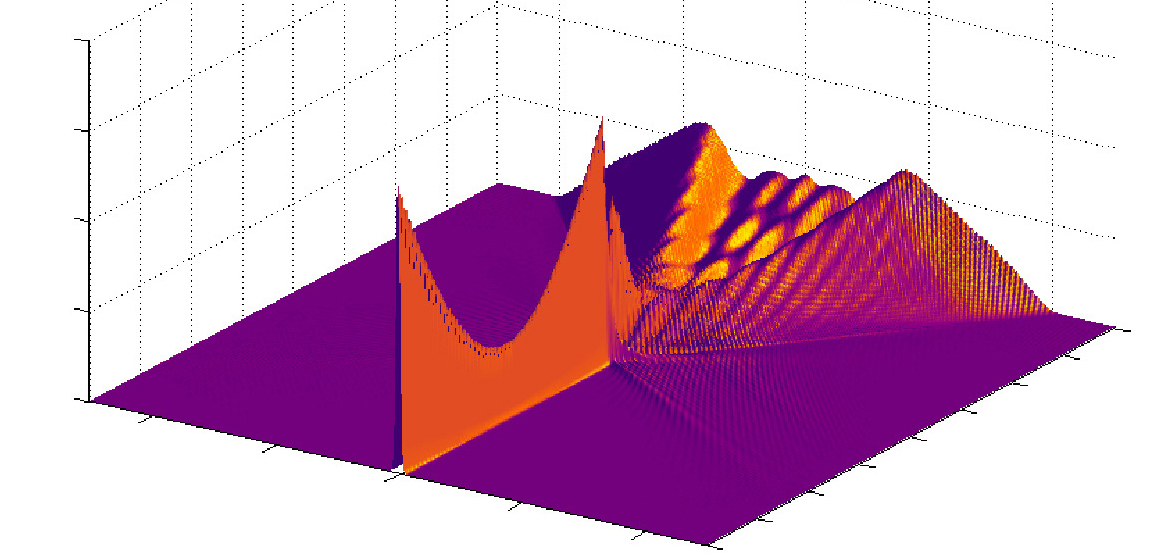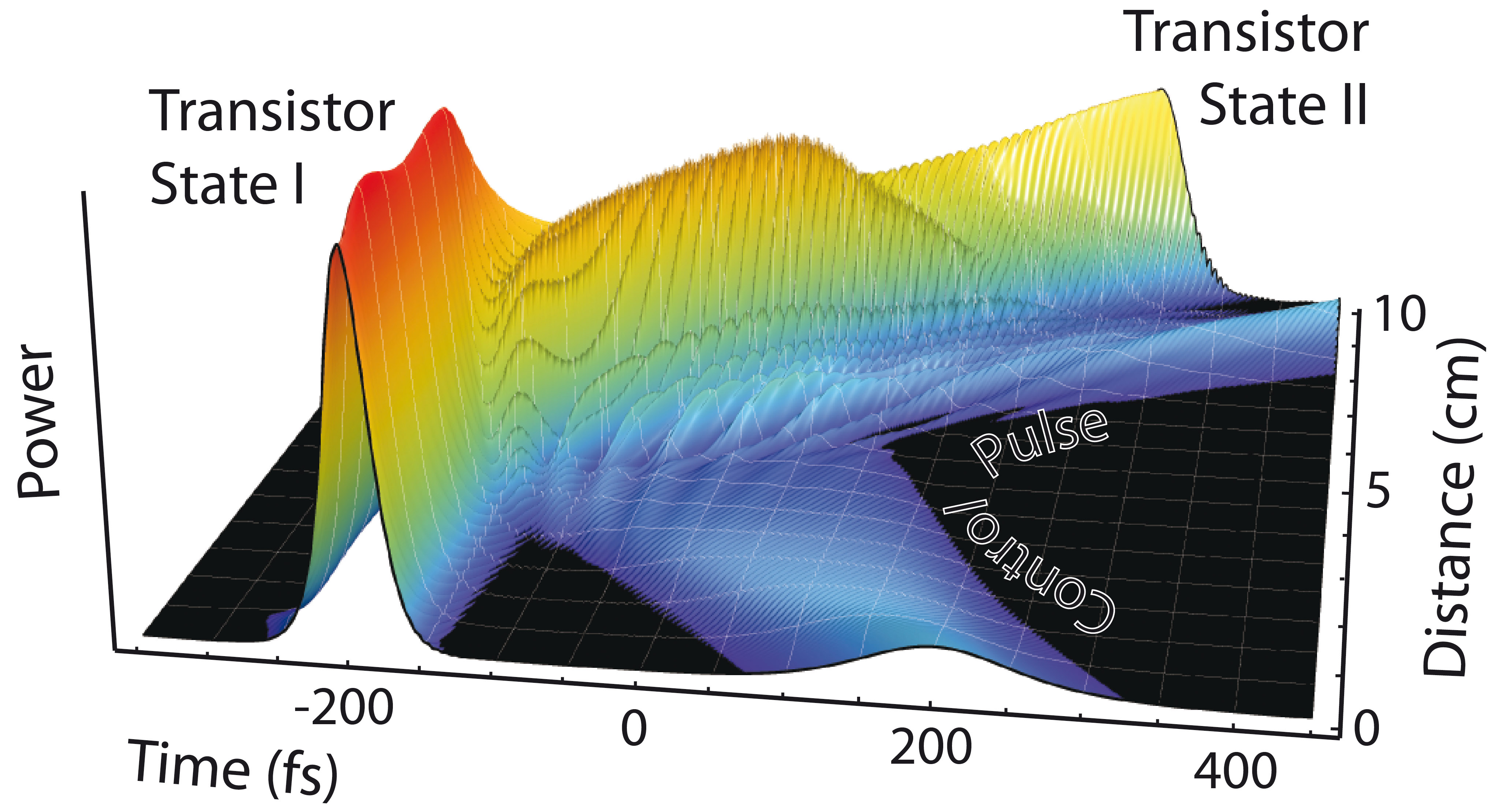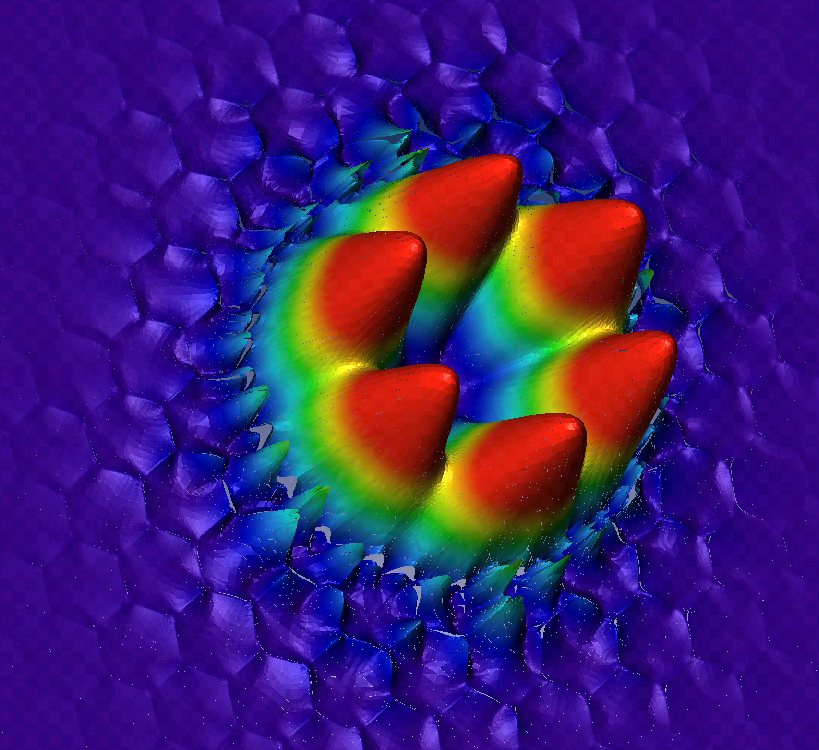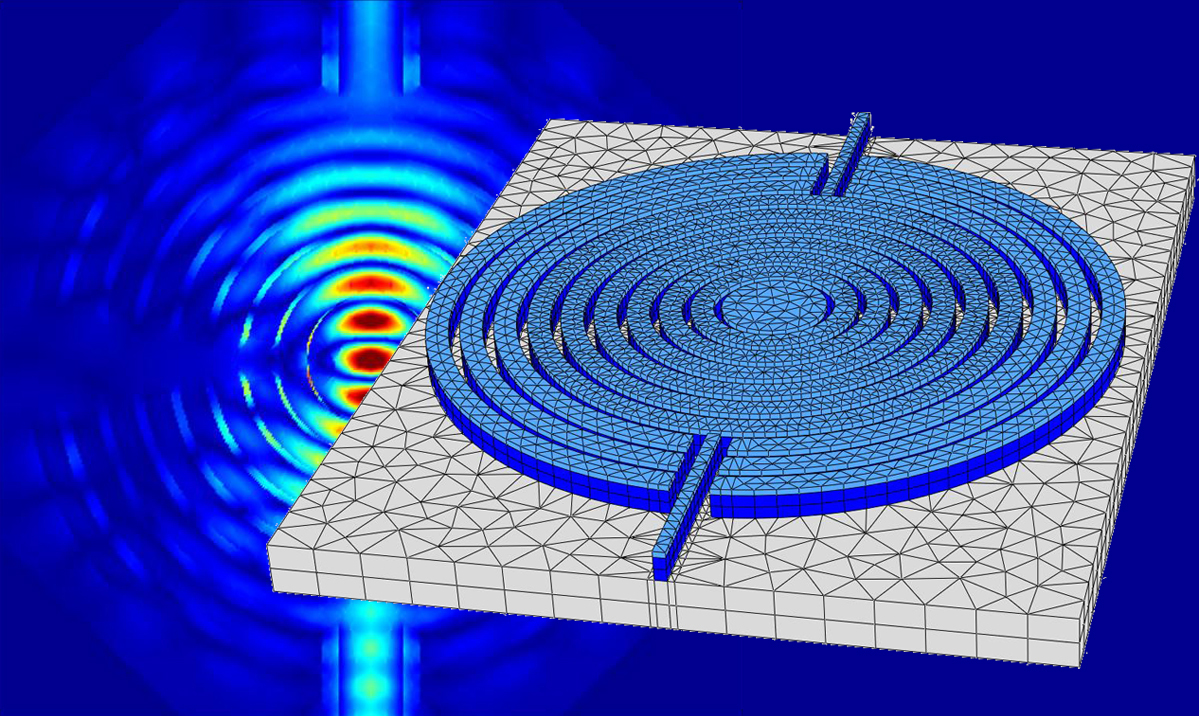Photonics
Semiconductor lasers
 High-power laser with tapered amplifier: Simulation of the optical field
The use of semiconductor lasers forms the basis of many modern technologies such as communication, material processing, sensor systems or medical technology.
Depending on the application field, different types of devices must be optimized with respect to specific performance characteristics.
The methods developed at Matheon for mathematical modeling, simulation and optimization can reduce elaborate experimental testing considerably while boosting innovation cycles significantly.
High-power laser with tapered amplifier: Simulation of the optical field
The use of semiconductor lasers forms the basis of many modern technologies such as communication, material processing, sensor systems or medical technology.
Depending on the application field, different types of devices must be optimized with respect to specific performance characteristics.
The methods developed at Matheon for mathematical modeling, simulation and optimization can reduce elaborate experimental testing considerably while boosting innovation cycles significantly.
Our long-standing experience has been incorporated in diverse software tools for device simulation: WIAS-TeSCA comprises two-dimensional optoelectronic and energy models; the WIAS-Oskar3,
developed for 3D detector simulation, enables electronic calculations for surface emitters (VCSEL). Our expertise also extends from edge-emitting lasers and ring lasers through to broad-area lasers with high brilliance.
The software tool WIAS-LDSL can be used to both model dynamic effects, such as short pulses or rapid switching, as well as optimize stationary performance such as beam quality for lasers with high brilliance.
In cooperation with several partners, the latest developments with respect to materials (e.g. quantum dots) as well as new device concepts are supported by corresponding mathematical innovations.
Ultrashort pulses
 Simulation of the optical switching for purely optical transistors
An adequate description of ultrashort pulses evades the envelope approximation owing to its intrinsically large spectral width and often high field strengths and therefore calls for new models.
Matheon has developed such models taking basic physical principles into account so as to apply them to realistic cases. Particular attention is paid to the precise modeling of dispersion effects.
Simulation of the optical switching for purely optical transistors
An adequate description of ultrashort pulses evades the envelope approximation owing to its intrinsically large spectral width and often high field strengths and therefore calls for new models.
Matheon has developed such models taking basic physical principles into account so as to apply them to realistic cases. Particular attention is paid to the precise modeling of dispersion effects.
On this basis, we examine the evolution of pulses along the axis of non-linear, dispersive optical fibers as well as the interaction of such pulses. A prominent example is illustrated below.
The non-linear interaction of pulses can lead to new, surprising effects. At present, these are still predominantly utilized in fundamental research, e.g. for highly precise spectroscopy and time measurement standards.
More recent results, including those from Matheon, also suggest innovative technological applications, for example the concept of purely optical transistors, whereby non-linear interaction between a control pulse and an
intensive signal pulse occurs in a dispersive, non-linear optical fiber.
Optical fibers
 Light distribution in the cross section of a photonic crystal fiber
The dispersion profile of optical fibers decides on the fate of optical pulses during their propagation along such photonic components.
This applies unconditionally for weak pulses, but also in the interaction with the non-linearity resulting from high intensities.
Both effects can be influenced by the design of fibers.
Light distribution in the cross section of a photonic crystal fiber
The dispersion profile of optical fibers decides on the fate of optical pulses during their propagation along such photonic components.
This applies unconditionally for weak pulses, but also in the interaction with the non-linearity resulting from high intensities.
Both effects can be influenced by the design of fibers.
In order to calculate the propagation of particularly strong pulses in such fibers, highly precise models are developed at Matheon using adequate rational functions.
The results of these models in extreme optical frequency ranges are superior to those of conventional polynomial approximation.
We develop fast and precise methods to characterize optical fields in fibers with complicated refraction index geometry and correspondingly complicated light fields, as typically occur in photonic crystal fibers.
Our methods allow automatic tolerance analyses to be conducted over large parameter ranges in order to find optimal and stable solutions and hence design robust production processes.
Nanophotonics
 Circular grating resonator
Nano-optical technologies are innovation drivers in many fields: They determine modern solar cell technologies, ensure efficient illuminants and energy-saving information transport,
form the basis of new bio-optical sensors, and lead to new computer architectures and flexible displays. Newly developed photonic chips, for example, utilize plasmonic effects or the
functionality of photonic crystals in order to significantly improve properties such as efficiency, speed and space requirement.
Circular grating resonator
Nano-optical technologies are innovation drivers in many fields: They determine modern solar cell technologies, ensure efficient illuminants and energy-saving information transport,
form the basis of new bio-optical sensors, and lead to new computer architectures and flexible displays. Newly developed photonic chips, for example, utilize plasmonic effects or the
functionality of photonic crystals in order to significantly improve properties such as efficiency, speed and space requirement.
Our competence lies in the modeling, simulation and optimization of optical components. New structures are developed and studied jointly with industrial partners.
We apply advanced adaptive finite element methods (AFEM), which can be used to describe large, complex and multi-scale geometries. Especially when it comes to optimizing complex 3D geometries,
our methods prove their tremendous strengths in comparison to conventional approaches.
Our methods and programs are used to optimize photo-masks in the semiconductor industry, develop special fibers in information technology, improve the functioning of optical sensors
as well as facilitate the development of new concepts for cheaper and more effective solar cells.
References
We have already implemented successful projects for various practice-relevant subjects with a range of prominent companies in the photonics sector and areas directly related. A selection can be found here:
- Carl Zeiss AG
- Ferdinand-Braun-Institut (FBH)
- JCMwave GmbH
- Masdar PV GmbH
- Max Born Institute (MBI)
- Philips Research
Make the most of our expertise for a more efficient route to innovation!


